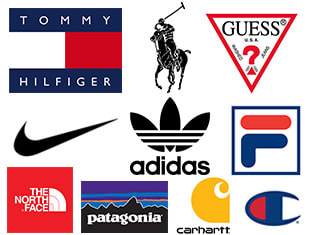The Relevance of Lasting Apparel: Exactly How It Impacts the Atmosphere and Your Closet
Lasting apparel is significantly acknowledged for its crucial duty in minimizing the environmental effect of the quick fashion business. By concentrating on eco-friendly products and honest manufacturing techniques, it addresses pressing eco-friendly concerns. This shift not only profits the planet however also influences customer choices, leading to a more thoughtful method to closet administration. Comprehending these dynamics elevates necessary inquiries about fashion's future and individual duty fit it.
The Environmental Footprint of Rapid Fashion

Advantages of Lasting Products
Lasting products supply significant benefits, specifically via green fabric options that reduce ecological injury. These materials additionally demonstrate longevity and long life, minimizing the demand for constant replacements. As a result, they add to a much more sustainable apparel industry and advertise accountable consumer actions.
Eco-Friendly Material Selections
While the fashion business has actually long been linked with quick patterns and environmental harm, the rise of eco-friendly textile options presents a transformative chance. Sustainable products such as organic cotton, hemp, and Tencel have gotten popularity as a result of their lower ecological influence. These materials are commonly produced without harmful chemicals and need much less water, reducing their carbon impact - Branded Clothing. Furthermore, lots of green materials are eco-friendly, adding to a round economic situation by lessening waste. Selecting sustainable products not just supports ecologically accountable practices yet also promotes much healthier environments. As customers become extra familiar with their buying power, the need for environmentally friendly fabrics encourages brands to innovate and embrace more sustainable production techniques, inevitably benefiting the world and future generations
Sturdiness and Durability Advantages
Several customers are progressively recognizing the sturdiness and durability advantages of sustainable products in their garments selections. Unlike conventional materials, lasting materials such as organic cotton, hemp, and recycled polyester are engineered to withstand deterioration, resulting in garments that last much longer. This decreased regularity of substitute not just conserves customers money in time however likewise lessens waste produced by quick fashion. Additionally, sustainable clothes commonly employs environment-friendly manufacturing approaches that boost textile toughness, adding to a reduction in the general carbon footprint. By buying durable clothing, customers can grow a much more sustainable wardrobe while appreciating top quality items that maintain their visual and performance in time. Toughness and long life stand as crucial benefits of choosing sustainable products.
Decreasing Waste Through Lasting Practices
Minimizing waste in the garment industry can be accomplished through cutting-edge methods such as upcycling and repurposing materials. In addition, embracing minimal closet techniques encourages customers to prioritize top quality over quantity, ultimately lowering clothes consumption. Together, these methods contribute substantially to a much more lasting clothing design.
Upcycling and Repurposing Products
Upcycling and repurposing materials have become ingenious methods in the apparel industry, transforming thrown out textiles into important new items. This strategy not only reduces waste yet likewise urges creativity and individuality in clothing design. By taking old garments and products, developers can create special items that show personal design while minimizing the need for brand-new resources. Additionally, upcycling typically needs much less power and water compared to conventional production procedures, significantly decreasing the ecological impact of fashion. As consumers come to be extra aware of sustainability, the popularity of upcycled garments remains to rise, advertising a circular economic climate. Inevitably, these techniques add to an extra lasting future, where fashion prioritizes ecological health over fast manufacturing and intake.

Minimalist Closet Methods
As individuals progressively look for to minimize their environmental effect, adopting minimalist wardrobe methods has actually gotten grip as an efficient approach to sustainable fashion. These strategies emphasize top quality over amount, motivating consumers to curate a smaller collection of functional, durable clothing. By focusing on classic items that can be blended and matched, individuals can reduce the frequency of acquisitions and eventually reduce waste.Additionally, minimalism advertises mindful consumption, prompting buyers to review the ethical and ecological implications of their selections. This strategy not just fosters a more lasting way of life however pop over to these guys likewise simplifies day-to-day decision-making pertaining to clothes. As individuals accept minimalist concepts, they contribute to a style culture that values sustainability and liable consumerism, eventually bring about a more eco-conscious society.
The Function of Moral Labor in Lasting Fashion
While numerous customers are significantly mindful of the ecological repercussions of their apparel choices, the value of moral labor methods in sustainable fashion can not be overlooked. Moral labor includes reasonable salaries, secure working conditions, and regard for workers' legal rights, creating the backbone of accountable fashion production. Brands that focus on moral labor not just boost neighborhoods but also set a standard for responsibility in the industry.Moreover, the integration of honest techniques fosters transparency, allowing customers to make informed options regarding their acquisitions. This practice contrasts dramatically with rapid style's exploitative labor versions, which commonly prioritize revenue over individuals. By sustaining firms committed to honest labor, customers contribute to a system that values human dignity together with ecological sustainability. Honest labor is not simply an add-on; it is essential to the broader mission of lasting style, making sure that the mission for eco-friendliness does not come at the expense of human rights.
The Effect of Sustainable Clothing on Carbon Emissions
Sustainable garments has the prospective to significantly reduce carbon exhausts connected with the fashion industry. Typical website link garment manufacturing adds notably to greenhouse gas exhausts, mostly due to energy-intensive production procedures and the use of non-renewable resources. On the other hand, sustainable style concentrates on environment-friendly materials, such as natural cotton or recycled fibers, which frequently call for less power to produce.Moreover, sustainable brands tend to take on a lot more effective production techniques, lessening waste and reducing general emissions. By prioritizing toughness and classic style, lasting clothing urges customers to purchase less regularly, additional decreasing the carbon impact connected with overconsumption.Additionally, several sustainable brand names are dedicated to openness in their supply chains, making it possible for consumers to make informed selections that align with their values. Inevitably, shifting in the direction of lasting apparel can cause a significant reduction in carbon emissions, adding to a much healthier planet and a much more lasting future for the fashion business.
Sustaining Neighborhood Economic Climates With Lasting Options
The shift towards lasting clothes not only addresses environmental worries but also considerably advantages local economies. By picking sustainable style, customers commonly support tiny businesses and regional artisans, enhancing community resilience. These business normally run on a smaller sized scale, prioritizing workmanship and honest methods over mass production.Investing in locally made lasting garments cultivates work production and boosts financial development within neighborhoods. As consumers become much more knowledgeable about the environmental impact of their purchases, they increasingly look for items that show their worths. This demand motivates local producers to adopt sustainable practices, adding to a round economy.Moreover, sustaining neighborhood organizations lowers transport discharges, lining up with eco-conscious consumer actions. The interconnectedness of lasting clothes and local economies emphasizes the important function that individual choices play in advertising both see this website economic and environmental health. By cultivating these regional connections, communities can grow while additionally working towards an extra lasting future.
Transforming Your Closet: Tips for a Lasting Closet
As people seek to minimize their ecological influence, changing a closet into a lasting wardrobe ends up being a vital action. One reliable method is to assess existing apparel, keeping just items that are worn regularly and that align with sustainability objectives. Focusing on quality over amount is crucial; spending in resilient items from environmentally friendly brand names can significantly lower waste.Additionally, incorporating pre-owned things can revive a closet while reducing environmental damages. Organizing apparel swaps with good friends or giving away unused products can better promote sustainability.When purchasing, people need to seek materials that are natural, recycled, or naturally degradable, and avoid rapid style stores - Branded Clothing. Ultimately, exercising conscious intake by attentively considering each purchase can add to an extra sustainable way of life. By applying these suggestions, one can produce a closet that reflects personal design while sustaining ecological stewardship
Frequently Asked Questions
How Can I Determine Sustainable Garments Brands?
To identify lasting clothes brands, one must research products made use of, examine for certifications like Fair Trade, and analyze the brand's transparency about their production processes, labor practices, and environmental influence, ensuring ethical and environmentally friendly practices are focused on.
What Are the Expenses Connected With Sustainable Fashion?
The costs associated with sustainable style can differ substantially. Greater manufacturing costs, honest sourcing, and eco-friendly materials often bring about raised retail rates, which might prevent some consumers while appealing to environmentally aware customers.
Can Lasting Apparel Be Fashionable and fashionable?
Lasting garments can without a doubt be stylish and stylish. Developers significantly prioritize cutting-edge materials and ethical production approaches, confirming that style and sustainability can coexist. Customers currently have varied alternatives that mix aesthetic appeals with ecological awareness.
How Does Washing Clothing Affect Their Sustainability?
Washing clothes considerably impacts sustainability by consuming water and energy, adding to pollution, and creating microplastic launch. Frequent cleaning can degrade materials, reducing their lifespan and boosting the demand for replacements, eventually aggravating environmental worries.
What Is the Life-span of Sustainable Clothes Contrasted to Quick Style?
The lifespan of sustainable garments normally exceeds that of fast fashion products, usually lasting several years as a result of quality materials and craftsmanship. In contrast, fast style garments might break down quickly, necessitating more regular replacements. Sustainable clothes is progressively identified for its critical role in reducing the environmental influence of the quick style market. While several customers are increasingly conscious of the environmental repercussions of their garments options, the relevance of honest labor techniques in lasting fashion can not be overlooked. Branded Clothing. Sustainable clothes has the possible to significantly decrease carbon emissions associated with the style sector. In comparison, lasting fashion focuses on environment-friendly products, such as organic cotton or recycled fibers, which frequently require much less power to produce.Moreover, lasting brands tend to adopt extra reliable manufacturing practices, decreasing waste and decreasing general emissions. By prioritizing sturdiness and timeless design, lasting garments motivates consumers to acquire much less frequently, further minimizing the carbon footprint linked with overconsumption.Additionally, lots of sustainable brands are committed to openness in their supply chains, allowing consumers to make enlightened options that straighten with their values